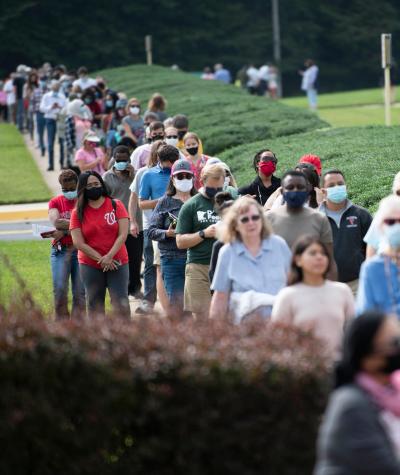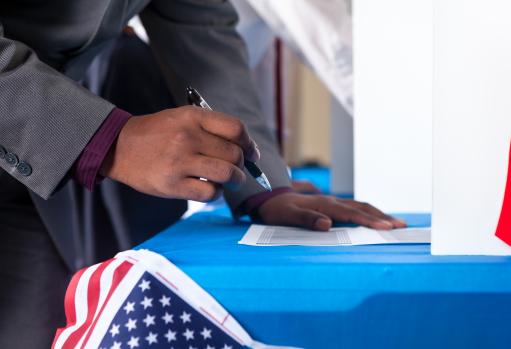The 2020 general election is projected to have had the highest voter turnout in more than a century—since the election of 1900, when William McKinley won reelection and a much smaller portion of the U.S. population was even eligible to vote.
Faced with a global pandemic, voters showed up in record numbers. As of this writing, around 160 million Americans (an estimated two-thirds of those eligible to vote) are projected to have voted in this election. In comparison, in 2016—the election with the next highest absolute number of voters—136.8 million people voted.
Record turnout doesn’t happen by accident. It happens when citizens, voting rights advocates, and public officials lead with democratic values and work to ensure every eligible voter can participate and have their voice heard.
States Expanding Safe, Secure Voting Made a Difference
In response to COVID-19, over half of all states (including red and blue states) expanded access to absentee voting. Pennsylvania, New Hampshire, New York, and many other states eliminated or suspended the need for an excuse to request an absentee ballot or established that fear of contracting COVID-19 is a legitimate excuse to vote absentee.
In addition, California, Nevada, New Jersey, Vermont, and the District of Columbia changed their laws to automatically send a mail-in ballot to every registered voter.
Many other states extended deadlines to request and postmark absentee ballots or expanded early voting sites and ballot drop off locations. Some states, such as Nevada and Arizona, also updated their ballot cure processes to make it easier for eligible voters to fix defective ballots—as they are legally entitled to do.
Each of these reforms—which created new opportunities for voters to cast their ballots safely—were the result of extensive advocacy efforts that began long before Election Day. And they were enacted by both Republican- and Democratic-majority legislatures.
CLC Fought for Voters and Won
Campaign Legal Center (CLC) and other advocacy organizations played an important role in ensuring these changes were in place for the November 2020 election.
CLC fought for better access to voting across the country, including in states such as Pennsylvania, Minnesota, New Jersey, New York, Rhode Island, and Tennessee.
For example, in Rhode Island, where CLC won an important case allowing voters to cast an absentee ballot without a witness present, absentee voting increased dramatically, as did voter turnout overall, setting a new state record.
In Pennsylvania, CLC advocated for better signature match policies, and in response to a CLC lawsuit, the Pennsylvania Secretary of State issued guidance that County Boards of Elections could no longer reject a ballot based solely on an error-prone signature match system.
This gave the more than 2.6 million Pennsylvania voters who voted absentee more confidence that their ballots wouldn’t be rejected due to perceived discrepancies in handwriting.
This High Voter Turnout Is a Win for Democracy
The record turnout shows that these policies work and should be used in every election—so voters have the ability to participate in our democracy.
Too many Americans still face intentional barriers to voting and faced them in this election. The work is not over. At the least, the high turnout in the 2020 general election is a sign that democracy is resilient, and that is something to celebrate as the fight for democracy and voting rights continues.


